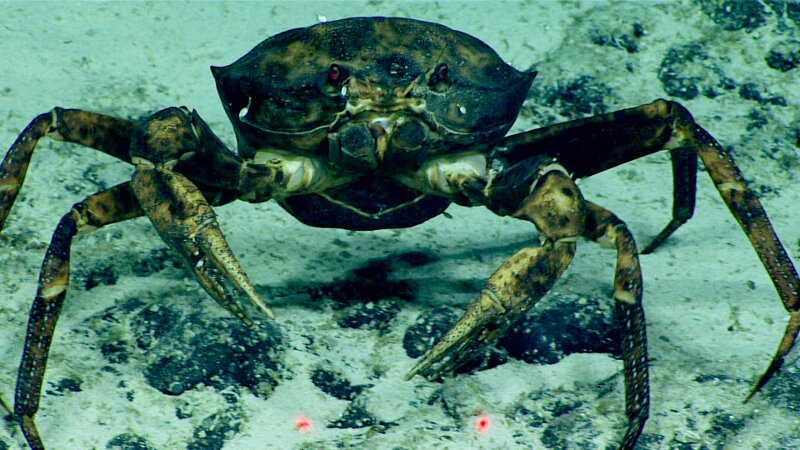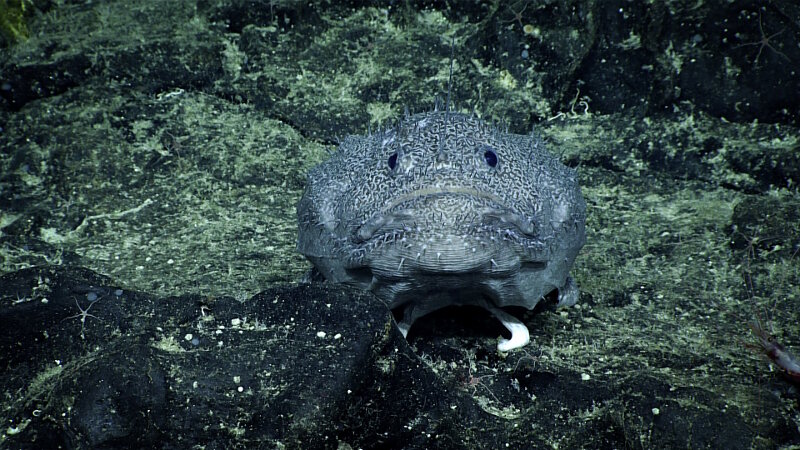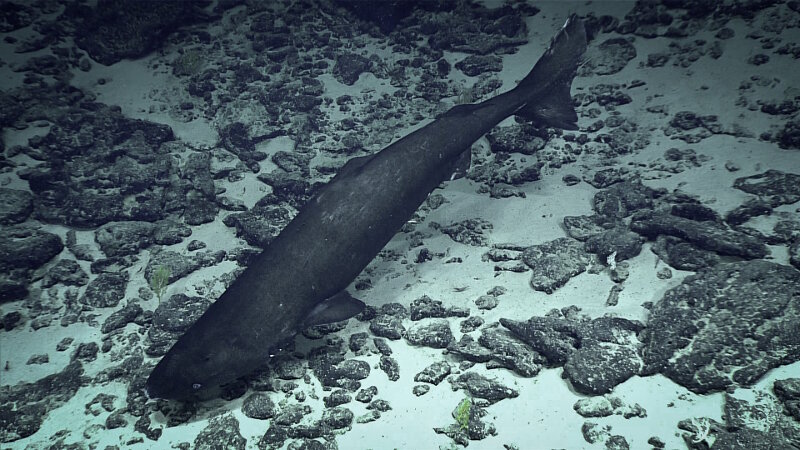-

Female golden crab, heavy with purple eggs, found at about 1,015 meters (3,330 feet) on Dive 07, is covered in black spot disease. The family name, Geryonidae, comes from Geryon of Greek mythology. Geryon was a three-headed, four-winged giant who lived on the island of Erytheia on the far side of the Earth-encircling river named Okeanos. The black patches visible all over the crab's carapace and legs are evidence of a bacterial disease, aptly called black spot. Black spot disease can be more prevalent on crabs that have not molted for some time. Image courtesy of the NOAA Office of Ocean Exploration and Research, Mountains in the Deep: Exploring the Central Pacific Basin. Download larger version (jpg, 1.9 MB).
-

Batfish were common on the seamount dubbed "Whaley." Image courtesy of the NOAA Office of Ocean Exploration and Research, Mountains in the Deep: Exploring the Central Pacific Basin. Download larger version (jpg, 1.8 MB).
-

This Pacific sleeper shark, seen at about 980 meters (3,215 feet) on Dive 07, came by to inspect the lights from remotely operated vehicle Deep Discoverer. Image courtesy of the NOAA Office of Ocean Exploration and Research, Mountains in the Deep: Exploring the Central Pacific Basin. Download larger version (jpg, 1.5 MB).